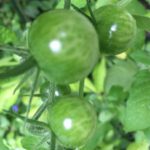planter care
The planters get a little tired and overgrown by the end of the summer, when the ideal combination of colors, heights and textures or their original design gives in to the whims of nature. There is beauty in that disarray, the beauty of the natural hierarchy that establishes itself outside of human intervention.
The plant in the picture is a Canadian variety of tuberous begonia called Illumination. It put up a spectacular performance last summer but was a little shy this year, like all the other shade lovers.
A few things about container care.
If you refill your pots with fresh potting mix every spring you won’t need to feed them during the summer, but the peat moss tends to dry up so fast it almost doesn’t matter how often you water them. I prefer real garden soil, even though it is very heavy, and the plants always perform better in it. If you do have garden soil in your planters it will require fertilizer, just like the rest of the garden, after the first three months.
Bunch pots together to keep the medium inside them, and thus the plants’ roots, from getting too hot, especially if you use plastic containers; this helps reduce the water loss too.
Store clay pots in a place where the temperature doesn’t drop below freezing, they always crack when left outside over winter.




 Previous Post
Previous Post Next Post
Next Post




